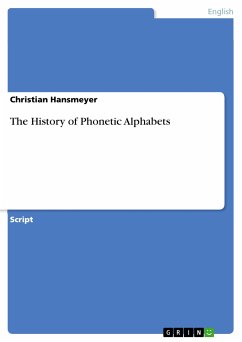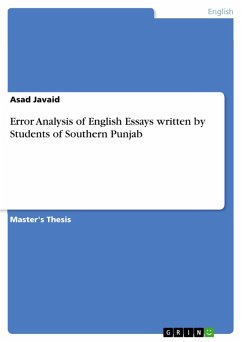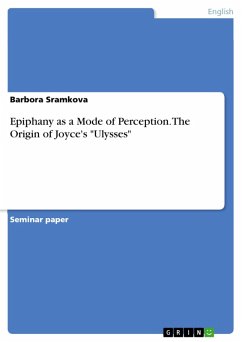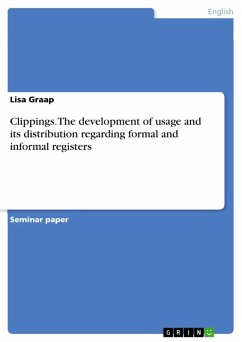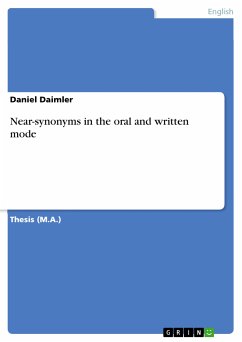
Near-synonyms in the oral and written mode (eBook, PDF)

PAYBACK Punkte
0 °P sammeln!
Thesis (M.A.) from the year 2004 in the subject English Language and Literature Studies - Linguistics, University of Marburg, language: English, abstract: The attempt to analyse the phenomenon of near-synonymy in the oral and written mode implicitely pronounces the expectation of finding a tendentious or even a significant variation among the lexical realisations of a given underlying semantic concept in diverse contexts of linguistic performance. However, this task requires a specific determination of the kind of variation we hope to uncover in the course of analysis. One option would be to i...
Thesis (M.A.) from the year 2004 in the subject English Language and Literature Studies - Linguistics, University of Marburg, language: English, abstract: The attempt to analyse the phenomenon of near-synonymy in the oral and written mode implicitely pronounces the expectation of finding a tendentious or even a significant variation among the lexical realisations of a given underlying semantic concept in diverse contexts of linguistic performance. However, this task requires a specific determination of the kind of variation we hope to uncover in the course of analysis. One option would be to inquire how often the lexical items under discussion are used in speech and writing, respectively, and to determine that an item, or target, t1 is used twice as often in written language than in spoken, while, conversely, we face the opposite fact for target t2. But such an observation would merely scratch the surface of the actual problem, namely the assessment of the variations among the items concerning their paradigmatic relations to each other in both modes of communication. Asked more articulately, presupposing that speech and writing show a considerable difference concerning dimensions exceeding the mere distinction of being produced in the oral or written mode, does this difference also affect the paradigmatic relations between particular lexical items in a significant way? The answer to this question would ultimately give rise to a more dynamic understanding of how the items are used in language in general. However, this consideration still leaves us with the problem of how to operationalise the items' paradigmatic relations to each other in such a way, that we are able to measure them in different situations of linguistic performance. In the present thesis, we will meet this challenge by pursuing the following argumentation: an inherent part of a lexical item's meaning is constituted by its collocational potential, this is, its syntagmatic readiness concerning a given set of locally co-occurring lexical context and, consequently, nearsynonyms share a certain, measurable amount of this potential with each other, assuming that if they are semantically similar, they may also be so in respect of their syntagmatic readiness. This is, if we consider a set of near-synonyms with respect to their collocational patterns in diverse situational contexts of linguistic performance, are we able to assert a significant difference concerning their similarity among each context? If we are able to observe such a difference, what are the proper dimensions and determinants of this variation? [...]
Dieser Download kann aus rechtlichen Gründen nur mit Rechnungsadresse in A, B, BG, CY, CZ, D, DK, EW, E, FIN, F, GR, HR, H, IRL, I, LT, L, LR, M, NL, PL, P, R, S, SLO, SK ausgeliefert werden.




